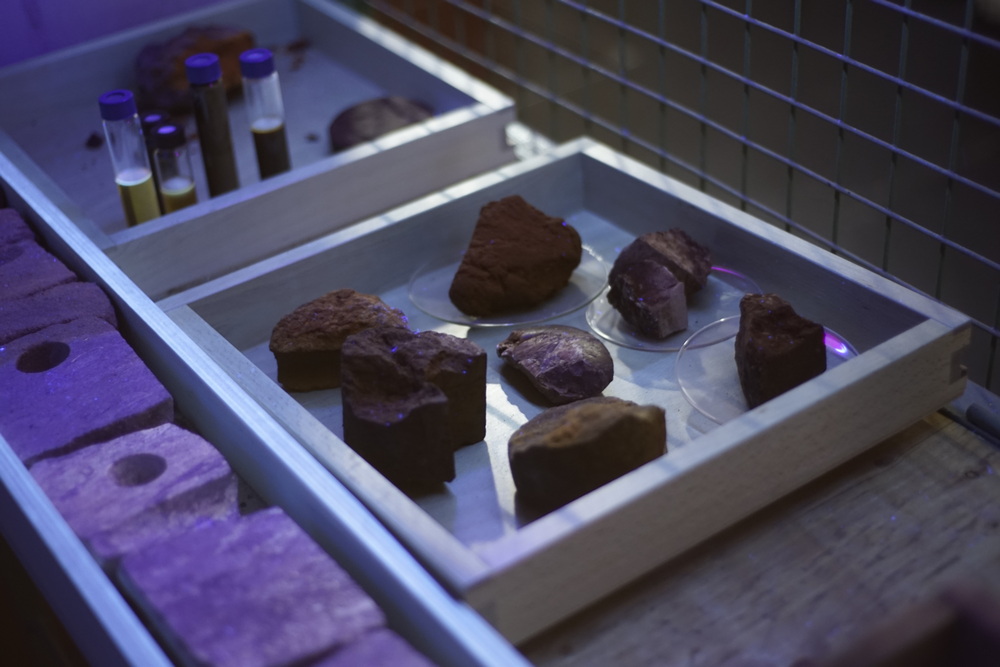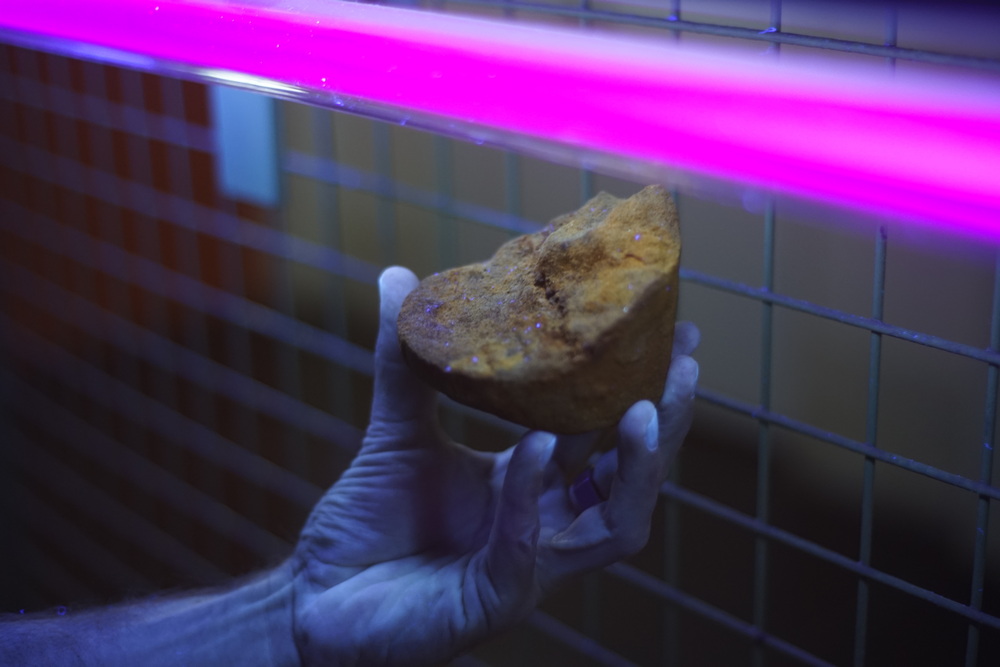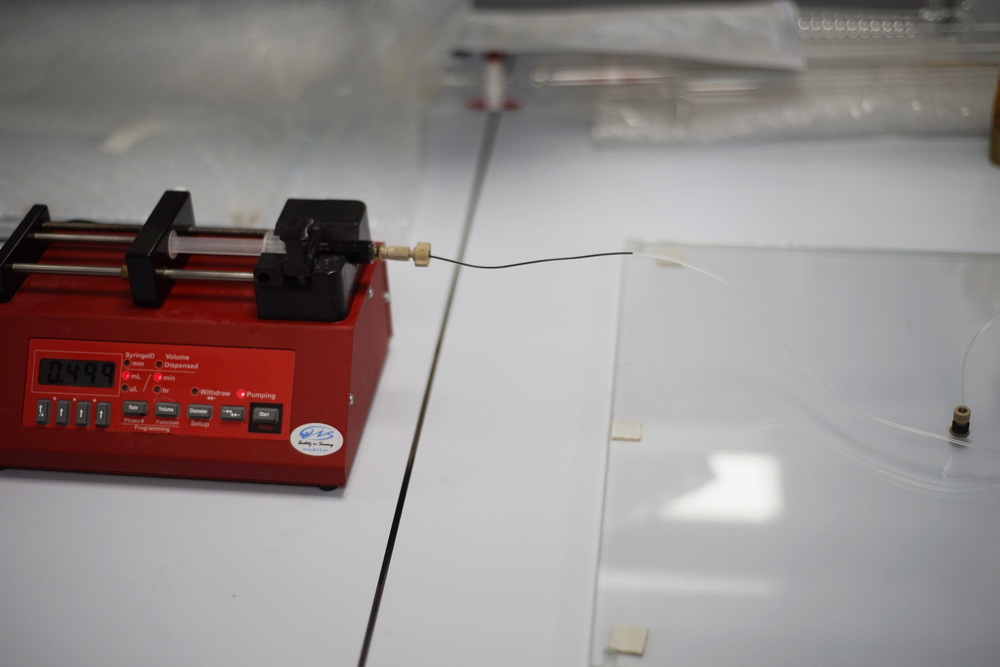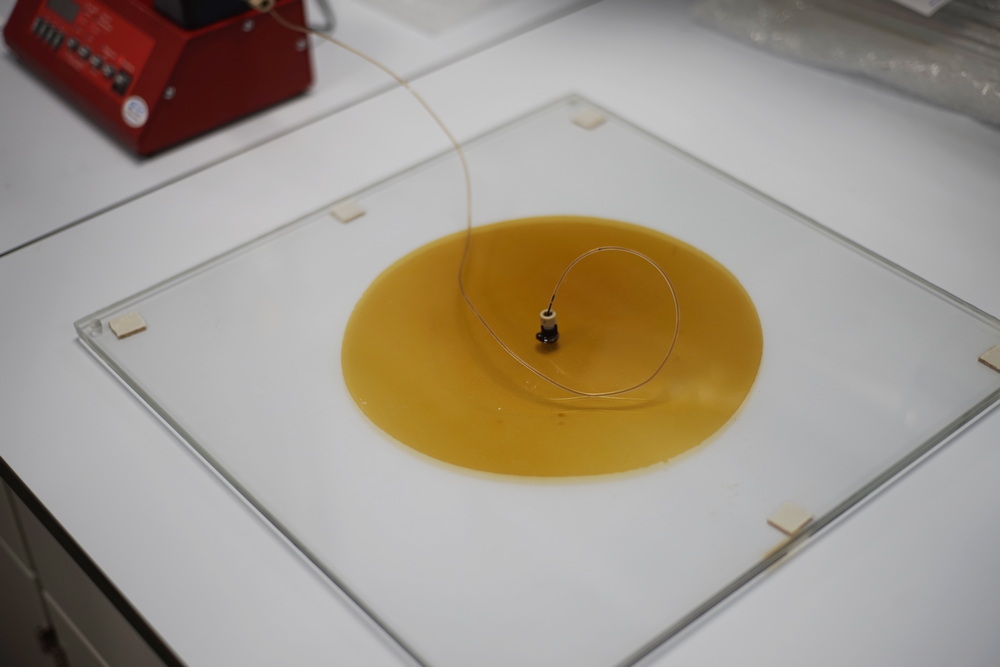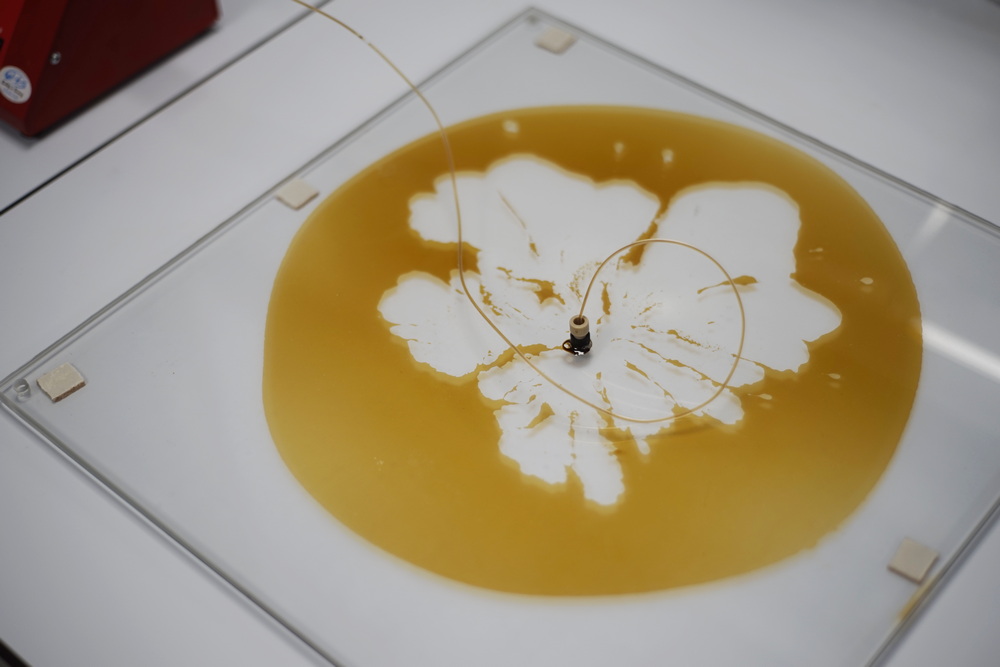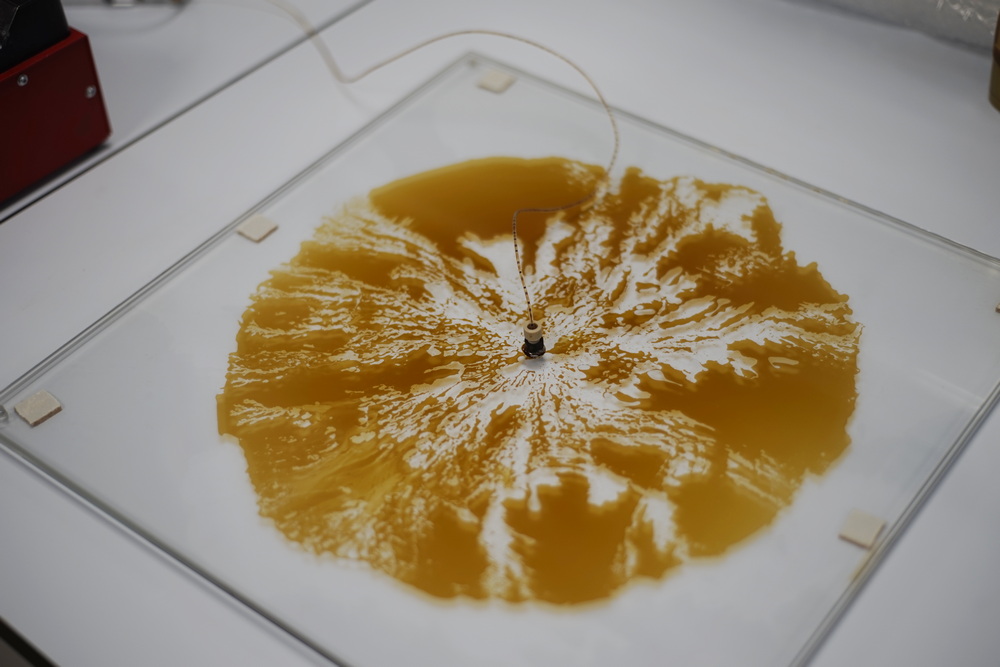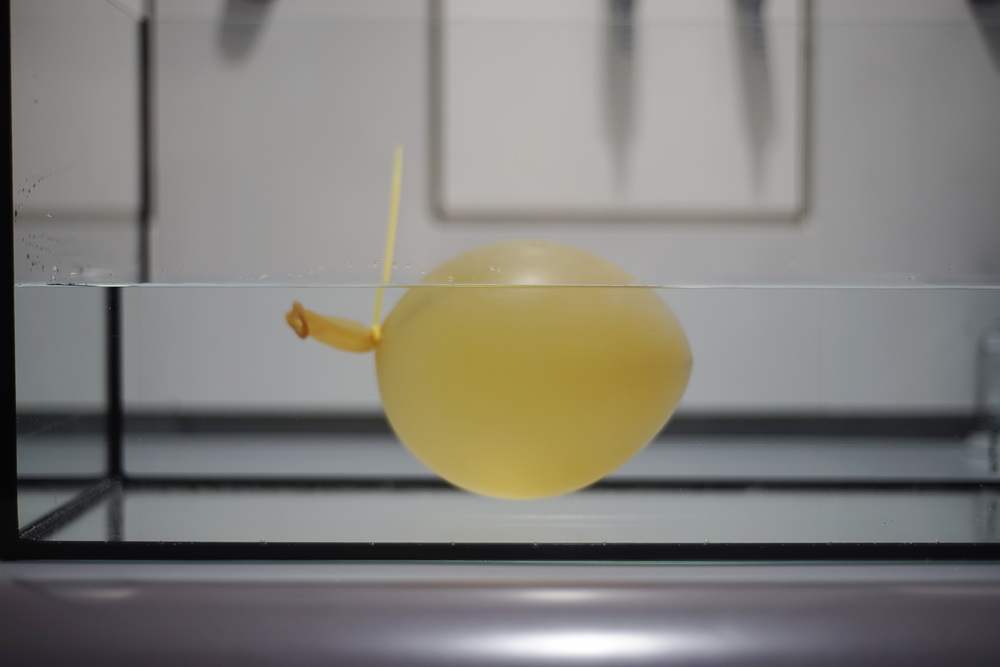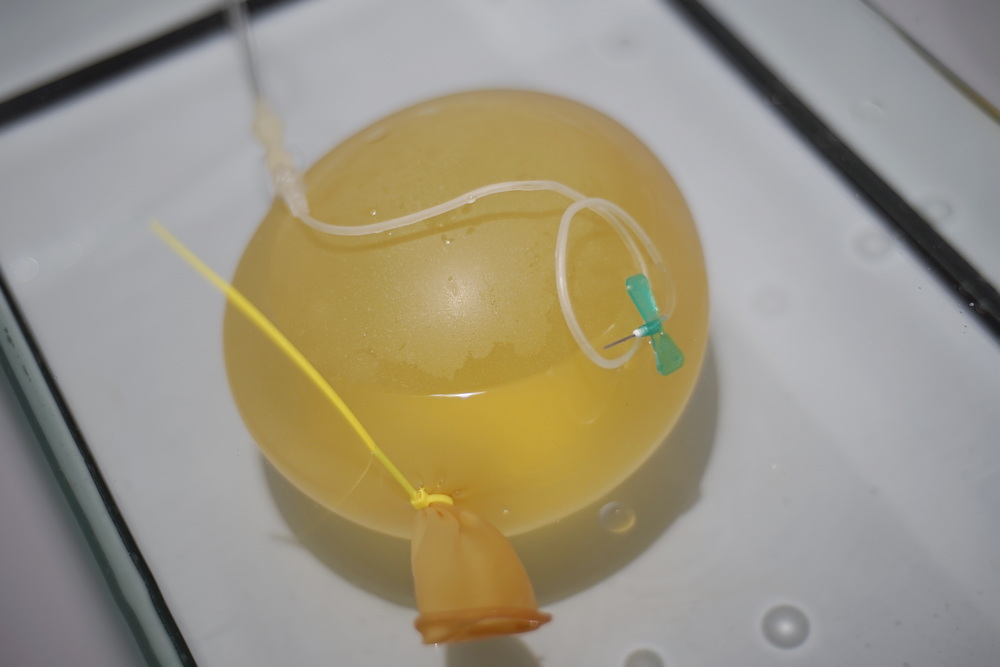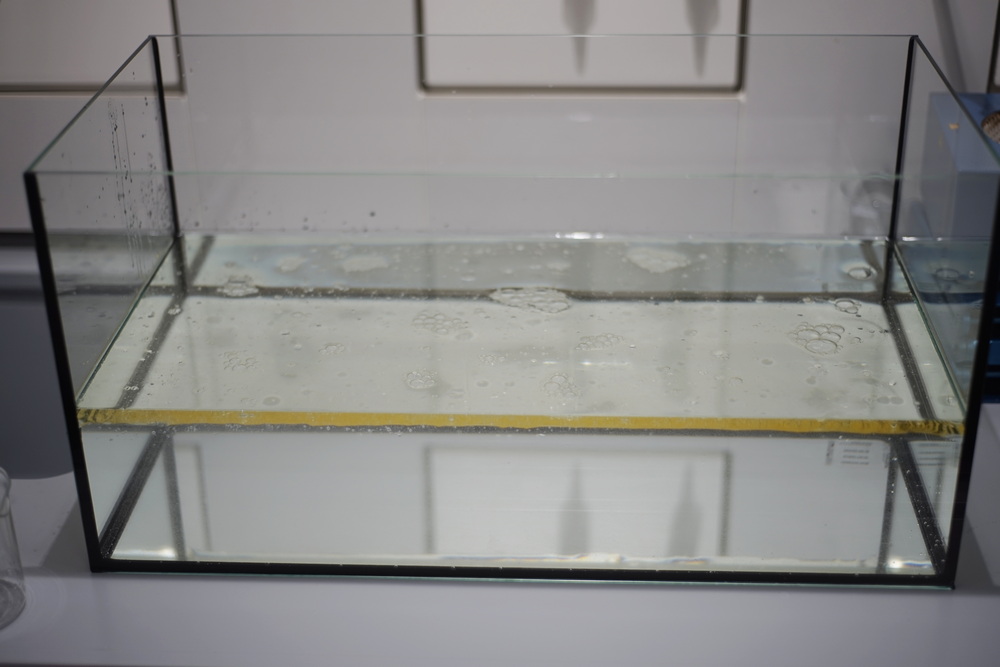Experiment VII, Leoben, 22 April 2021
Ernst Logar and Karez Abdulhameed visited the Chair of Petroleum Geology to learn more about rock formation. Petroleum geologists focus their research on the source rocks of crude oil, geological structure and rock mineralogy.
Logar and Abdulhameed were able to observe the fluorescent effect of crude oil on oil-bearing rocks under ultraviolet light. There are three parameters the level of this fluorescent effect depends on: API gravity, microbe presence and temperature. A drill core also showed visible timelines of different geological eras and events. Each sedimentation layer holds marine life signatures, biomarkers, such as algae, which help identify the eras of deposits. Biomarkers are complex carbon-based molecules derived from formerly living organisms. Each biomarker is quite distinctive, as the time required for organic matter to convert to crude oil varies.
Subsequently, Logar and Abdulhameed conducted further experiments together with Michael Koopmans at the Department Petroleum Engineering. Firstly, they carried out a Hele-Shaw experiment to determine the flow speed of substances. They examined firstly crude oil and then water. The flow was relatively slow, steady and with relatively less viscous fingering (patterns). The experiment was repeated a second time in the same pattern but with higher flow rate. The flow rate of both the crude oil and water was increased. Viscosity, flow rate and other crude oil concepts were reviewed to then reflect on crude oil as a source of contemporary society and industry.
Secondly, they conducted an experiment with a swimming oil balloon, filling a balloon with two litres of oil and placing it in an aquarium half filled with water. The balloon floated due to the difference in density. The aim was to then introduce a needle to extract the oil from the balloon, with the surrounding water acting on the balloon from the outside, and pushing out more of the oil through the hole made by the needle. However, the needle created a difference in pressure that the balloon walls could not handle. Thus the balloon burst, resulting in complete evacuation of the oil onto the water surface.
